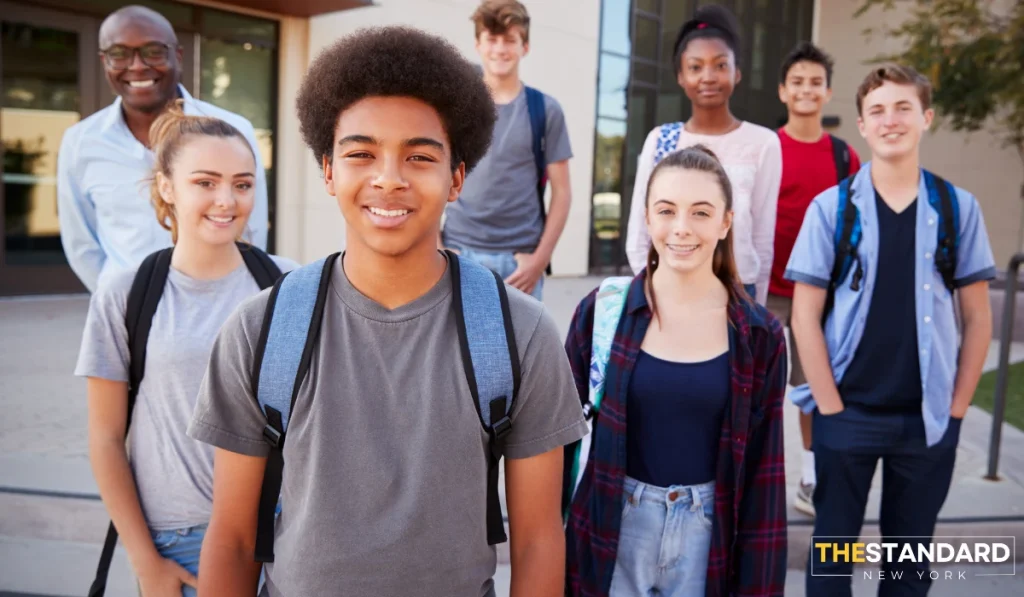In the vibrant, ever-moving hum of our neighborhoods, the pursuit of health and wellness often feels like another item on an already overflowing to-do list. For parents juggling school drop-offs and demanding careers, educators shaping young minds amidst ever-shifting policies, and professionals striving for excellence in competitive fields, the idea of “self-care” can seem like a luxury, not a necessity. But at TheStandardNY.com, we understand that true community upliftment begins with the well-being of its pillars. This isn’t about fleeting trends or quick fixes; it’s about embedding sustainable health practices into the fabric of our lives, recognizing that a thriving individual is the foundation of a thriving community.
The Silent Strain: Sleep and Our Youth
Let’s talk about sleep, or the lack thereof, especially amongst our youth. It’s a silent epidemic impacting academic performance and mental health. We see it in the bleary eyes of students in morning classes, the short tempers, and the difficulty concentrating. For many of our children, late-night activities, demanding homework loads, and the pervasive flickering of screens, pushes sleep to the margins. A study published in Frontiers in Psychology highlighted a significant correlation between sleep quality and learning engagement, noting that “the better the sleep quality, the higher the students’ learning engagement.” The research further emphasized that for students already grappling with mental health challenges, insufficient sleep compounds the struggle, leading to decreased attention, memory loss, and reduced problem-solving capabilities.
As parents, we often push our children to excel, to stay up late studying or participating in extracurricular activities, believing it’s the path to success. But what if we’re inadvertently sabotaging their very ability to learn and thrive? The data is clear: adequate sleep (more than 9 hours for adolescents) is linked to higher academic achievement. A recent study, specifically on undergraduate students, revealed that those sleeping less than the recommended 7-8 hours nightly experienced reduced attentiveness in class and poorer perceived academic performance. This isn’t just about grades; it’s about their overall well-being, their ability to regulate emotions, and their social connections. We must become advocates for better sleep hygiene, setting realistic bedtimes, and limiting screen exposure, especially in the hours before rest.
And what about our educators? The passionate individuals who pour their hearts into our children’s futures, often facing immense pressure, crowded classrooms, and limited resources. The term “teacher burnout” isn’t just a buzzword; it’s a stark reality for many. They are the frontline workers of our communities, and their mental health is paramount. The Institute of Education Sciences emphasizes that while self-care practices like meditation and exercise are beneficial, they may not be enough if educators lack the external support they need.
We need to foster supportive environments within our schools, places where mental health concerns are openly acknowledged, and resources are readily available. This means district-wide initiatives that prioritize educator well-being, offering accessible counseling services, and promoting a culture that encourages work-life balance. Simple things like clear boundaries around work hours, designated time for self-care, and peer support networks can make a significant difference. Organizations like Mental Health America provide valuable online resources, from mindfulness apps to podcasts tailored for educators, reminding us that no one has to navigate these challenges alone. It’s about collective responsibility, ensuring that those who nurture our children are themselves nurtured and supported.
Fueling the Hustle: Healthy Eating for Busy Lives
Time is a precious commodity. The idea of preparing a wholesome meal after a long day can feel like an impossible feat, often leading to reliance on convenient, yet less nutritious, options. But healthy eating isn’t about gourmet meals or endless hours in the kitchen; it’s about smart choices and strategic planning.
“Opt for frozen foods to retain nutrients and save time,” advises Jason Chung, a Clinical Dietitian at CHOC. He debunks the myth that fresh is always superior, noting that frozen produce, picked at peak ripeness, can often retain more nutrients. Embracing canned goods (with an eye on sodium content), utilizing slow cookers for “low and slow” cooking, and batch prepping meals are practical strategies that can transform chaotic weeknights into opportunities for family connection over a nutritious meal. MyPlate.gov also champions family involvement in meal planning and preparation, suggesting that when kids help, they’re more likely to try new foods. This isn’t just about what we eat, but how we eat, and making mealtimes a sacred space for connection, free from the distractions of screens.
Building a Culture of Wellness
Ultimately, fostering health and wellness in our urban communities requires a holistic approach that extends beyond individual habits. It demands community-led initiatives that address the unique challenges faced by our neighbors. Organizations like Urban Pathways, through their “Total Wellness Program,” are demonstrating what’s possible. They connect individuals to community-based healthcare, offer health education on topics ranging from nutrition to stress management, and empower residents to take control of their health journey. Similarly, the National Urban League’s “Project Wellness” aims to reduce health disparities by empowering communities of color with evidence-based, culturally relevant wellness approaches.
These initiatives aren’t just about providing services; they’re about building a culture of health, where well-being is not a privilege but an accessible right. They acknowledge the interconnectedness of physical, mental, and social health, offering pathways to support and empowerment.
The journey to a healthier, more vibrant community is ongoing. It requires us to look critically at the challenges, embrace innovative solutions, and most importantly, remember that the strength of our collective future rests on the well-being of every parent, every educator, and every professional who calls these dynamic cities home. Let’s commit to prioritizing wellness, not as an afterthought, but as the essential bedrock upon which we build stronger, more resilient lives.





